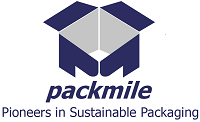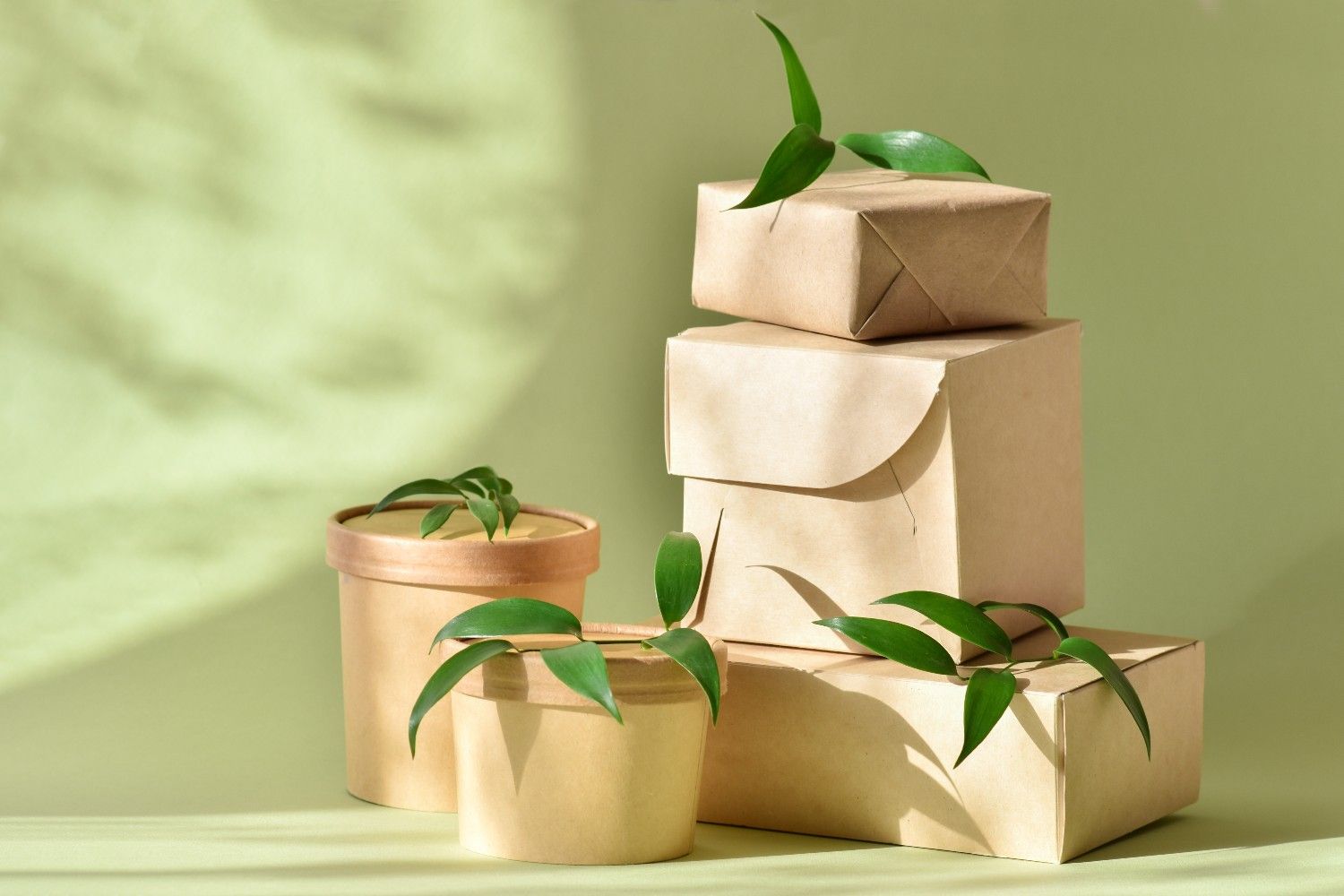Packaging is an integral part of our everyday lives. Everything comes wrapped, sealed, and packaged away, from the groceries we purchase to the items we order online. But on the flip side of convenience is waste. There’s so much of it. Landfills are full, oceans are covered with plastic, and climate issues demand attention every day. The need to seek alternative packaging solutions has never been more apparent.
As we progress into 2025, companies and customers reassess their footprint on the earth. Individuals are questioning more critically. What does this box become when I use it? Do I need this plastic wrap? Would there be something else?
Welcome, sustainable packaging manufacturers, not a buzzword, but a movement. One that’s revolutionizing the way companies package, ship, and sell their goods. And one that resonates strongly with a buying generation that is concerned about what comes next.
What Is Sustainable Packaging?
Sustainable packaging consists of materials and designs that are safe, functional, and ecologically responsible throughout their life cycle. It’s making packaging that does the job without harming the future.
Key features are:
- Materials that are renewable or recycled
- Low environmental footprint in manufacturing and disposal
- Recyclable, reusable, or compostable
- Resource-efficient—less is more
In contrast to conventional packaging, which uses single-use plastics and fossil fuels, sustainable packaging is planned for longevity and end-of-life. That translates to less material ending up in landfills and more remaining in a closed-loop system.
And don’t forget the numbers. The World Bank estimates that the world’s waste will increase by 70% by 2050 if trends continue. Packaging waste, especially plastic, is a big part of it. Switching to sustainable alternatives isn’t a good idea—it’s necessary.
The Latest Trends in Sustainable Packaging for 2025
This year has seen a tide of innovation. Here’s a glimpse at the top trends influencing the sector:
1. Compostable and Biodegradable Materials
Companies are shying away from traditional plastics in favor of those that decompose naturally. Consider plant-based packaging film, mushroom packaging, seaweed wrapping, and cornstarch substitutes. Mailers and food packaging made from compostable materials quickly replace styrofoam and petroleum-based packaging.
2. Recyclable Packaging
Even more, businesses opt for single-material packaging that can be recycled more simply. For instance, cardboard or recyclable PET should be used instead of laminated or multi-layer plastic. Labels now explicitly indicate how and where to recycle, making it simpler for customers to recycle properly.
3. Minimalist & Zero-Waste Packaging
Less is more in 2025. Minimalism is about eliminating excess layers, fillers, or inks. Concentrate products (such as cleaning tablets or shampoo bars) and refill pouches are gaining favor, eliminating the need for cumbersome bottles or boxes.
4. Smart Packaging
This is not about being cool—it’s about functionality. Intelligent packaging features scannable QR codes that inform consumers how to properly dispose of packaging. Some track freshness, too, cutting down on food waste. Add in sustainability, and tech-infused packaging provides both environmental and consumer value.
5. Reusable & Refillable Packaging
The return-and-reuse trend is in fashion again. From reusable coffee cups made of stainless steel to glass jars and returnable shipping containers, brands are urging customers to send back or reuse the package instead of discarding it. Stores now give discounts or rewards for returning containers, marrying convenience with responsibility.
Why Sustainable Packaging Matters More Than Ever
Let’s face it—packaging has been a huge part of environmental issues for a long time. It’s one of the leading causes of plastic pollution. Most of it is created to be discarded, and much of it finds its way into areas it shouldn’t go—into oceans, rivers, and even food chains.
And now the tide is shifting. Consumers are expecting more. Research indicates that more than 70% of consumers want to purchase from companies with sustainable packaging. And Millennials and Gen Z are leading the charge with their dollars and voices.
Governments aren’t quiet either. Everywhere in the world, governments are implementing tighter controls. From plastic prohibition to extended producer responsibility legislation, companies are being made responsible for what happens to their packaging after sale. And correctly so.
Sustainable packaging is not merely a moral decision—it’s becoming a business necessity.
How Businesses Can Implement Sustainable Packaging in 2025
Shifting to sustainable packaging is not something that occurs overnight. However, with a careful approach, any company can switch. Here’s how:
1. Conduct a Packaging Audit
Begin by examining your existing packaging. What are you using? What are you throwing away, and why? Find out where you can cut back on waste or change out materials.
2. Select the Proper Materials
Seek alternatives such as recycled paper, biodegradable plastic, or plant-based materials. Select materials that meet your product’s requirements without overkill. Remember that good for the planet does not need to be lower quality.
3. Collaborate with Sustainable Suppliers
Screen your suppliers thoroughly. Collaborate with vendors who openly disclose their sourcing and environmental processes. Pester them with the tough questions. Insist on certifications and traceability.
4. Inform Your Customers
Make it simple for your customers to know how to dispose of packaging. Utilize labels, inserts, or digital guidance. Include QR codes that provide recycling guidance or tips for reuse.
5. Cost vs. Long-Term Benefits
Yes, sustainable materials may indeed cost more initially. But consider the long-term benefits:
- Lower waste management costs
- Improved brand reputation
- Increased customer loyalty
- Compliance with changing regulations
It’s not about saving a buck. It’s about investing in the future.
Brands Leading the Way in Sustainable Packaging
Several companies are already raising the bar. A few examples follow:
- Patagonia: Celebrated for its unflinching environmental position, it incorporates 100% recycled content in garment bags and shipping boxes.
- Lush Cosmetics: Provides “naked” packaging, utilizing solid products such as shampoo bars to skip bottles altogether. They even accept containers in return for store credit.
- Loop: An online delivery platform that employs reusable containers for laundry detergent and ice cream, collected, cleaned, and reused.
These companies aren’t flawless, but they’re evidence that business success and sustainability don’t have to be mutually exclusive. The takeaway? Begin somewhere, remain open, and continue to improve.
The Future of Sustainable Packaging Beyond 2025
What’s to come next? The speed of innovation is speeding up.
Material Science Developments
Researchers are developing packaging that acts like plastic but degrades like paper. Advances include algae films, packaging that can be consumed, and materials that biodegrade in weeks.
AI & Automation
AI is aiding in optimizing packaging structures to contain less material without losing strength. AI is also applied in supply chain management to curb excess packaging and anticipate waste patterns.
Circular Economy Integration
We’re moving toward a circular economy for packaging, where waste is raw material, and products are built for a second life. Closed-loop systems, take-back programs, and universal refill schemes come to mind.
Packaging needs to be more sustainable by 2035—it might not be a choice then—it could be a requirement.
Conclusion: A Greener Tomorrow Starts Today
There’s no beating around the bush—the packaging sector leaves a large carbon footprint. But the silver lining is that change can occur. And already it is. From compostable boxes to reusable jars, greener, smarter, and more responsible packaging is the shape of things to come.
Whether you are a business owner or a socially aware consumer, your decisions count. Every item you produce or buy is a chance to choose sustainability.
Therefore, the issue is not whether we can afford to change to sustainable packaging but whether we can afford not to.
If you’re ready to make your packaging smarter, cleaner, and more environmentally friendly, the time to act is now. Green decisions are great for the planet, your brand, customers, and your bottom line.
Visit Packmile to discover green packaging solutions and begin your journey to a greener tomorrow.
Frequently Asked Questions
Initially, yes—but costs are dropping as demand grows. Long-term savings come through brand value, reduced waste fees, and supply chain efficiency. Start with phased rollouts, test with a subset of products, collaborate with eco-conscious suppliers, and educate internal teams for smooth adoption. In 2025, many regions will enforce Extended Producer Responsibility (EPR), mandate recycled content, and restrict single-use plastics. Compliance is essential to avoid penalties. Look for third-party certifications (e.g., FSC, Cradle to Cradle, BPI), transparent ingredient lists, and QR codes linking to verified lifecycle data. Is sustainable packaging more expensive than traditional packaging?
How can businesses transition to sustainable packaging without disrupting operations?
What are the latest regulations on packaging sustainability?
How can consumers identify truly sustainable packaging from greenwashing claims?


Leave A Comment